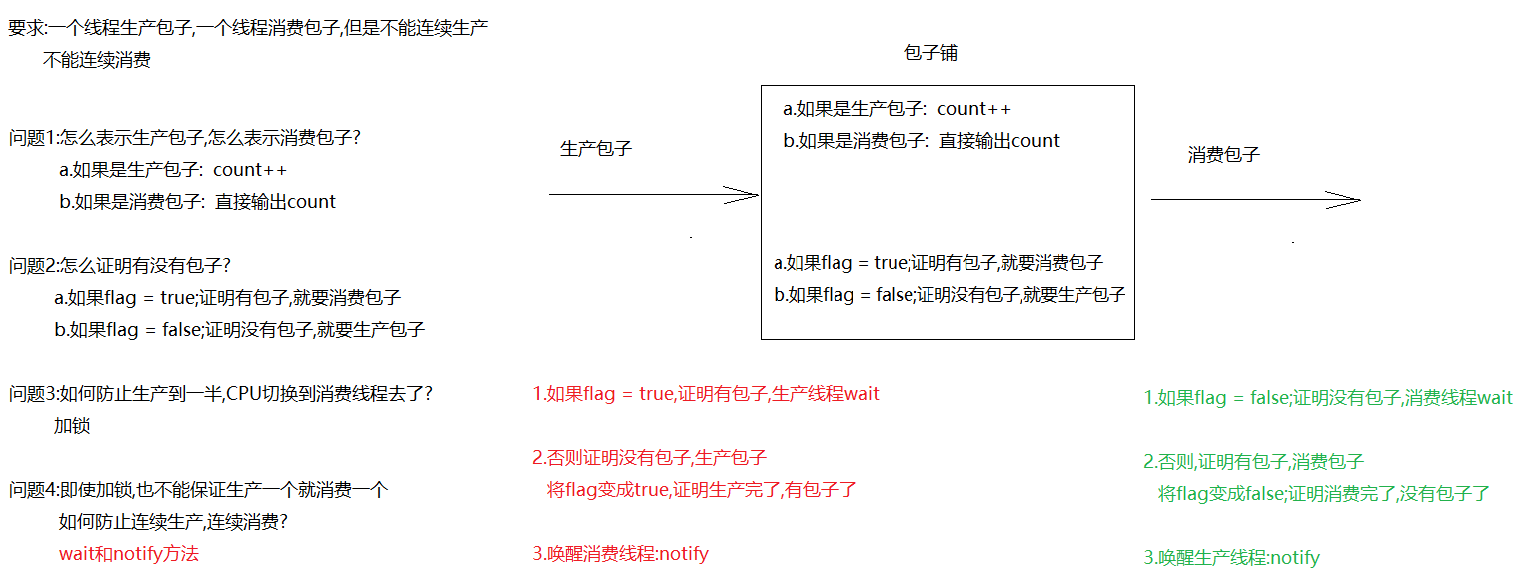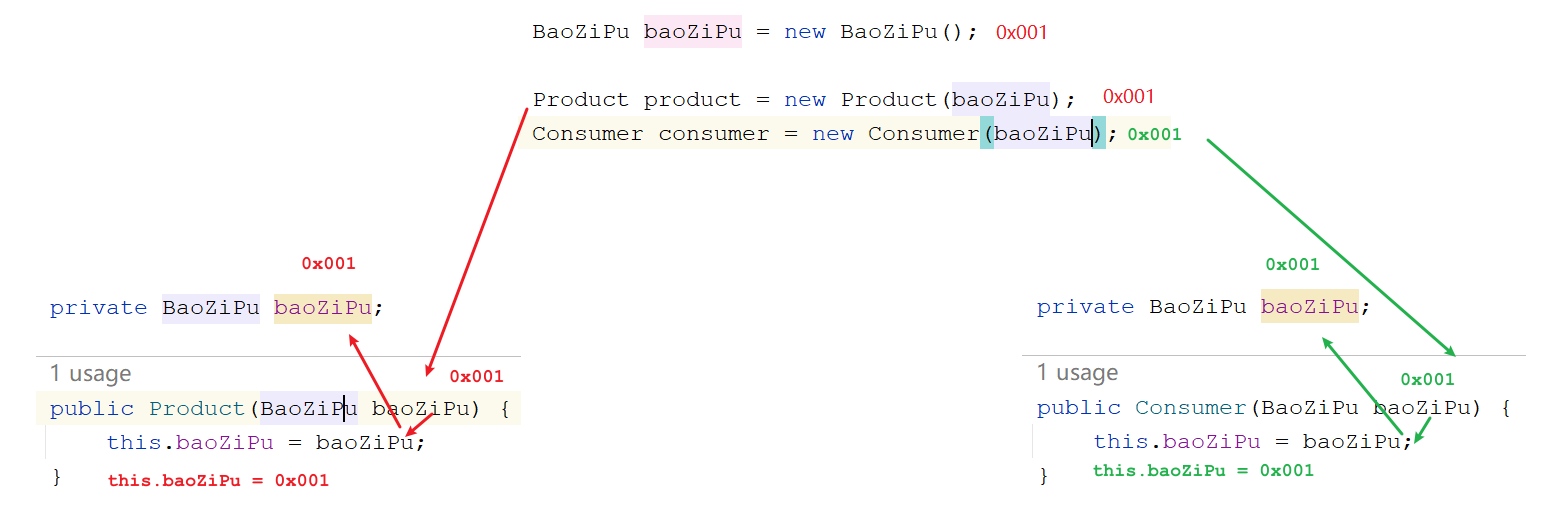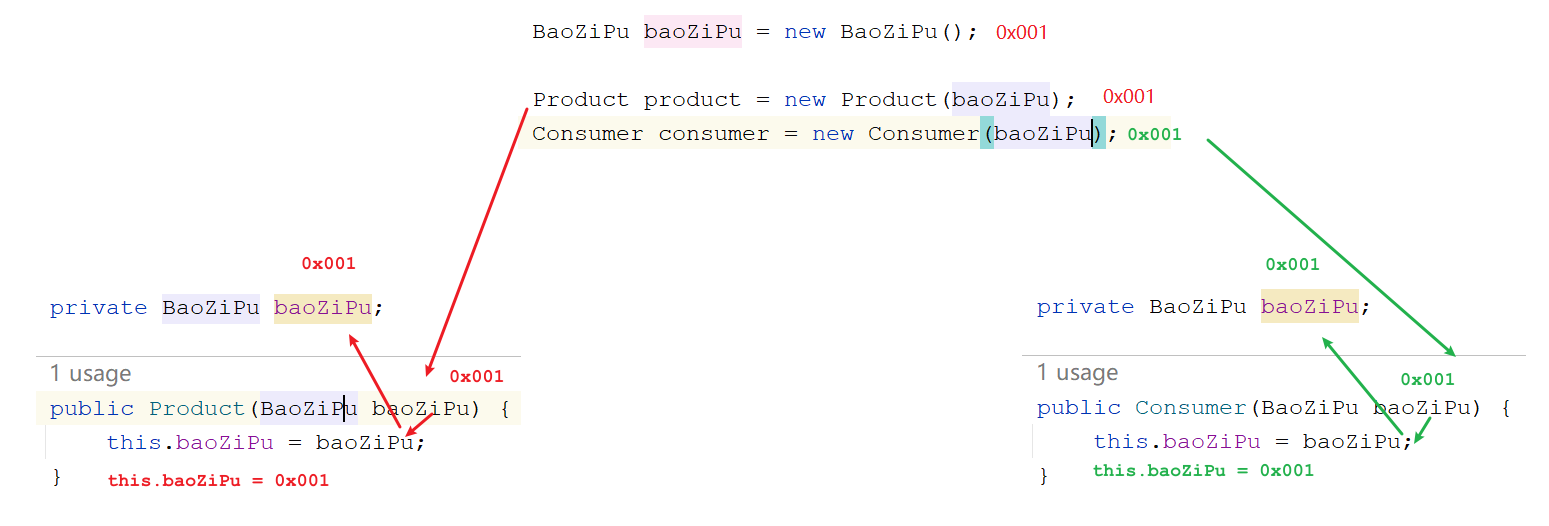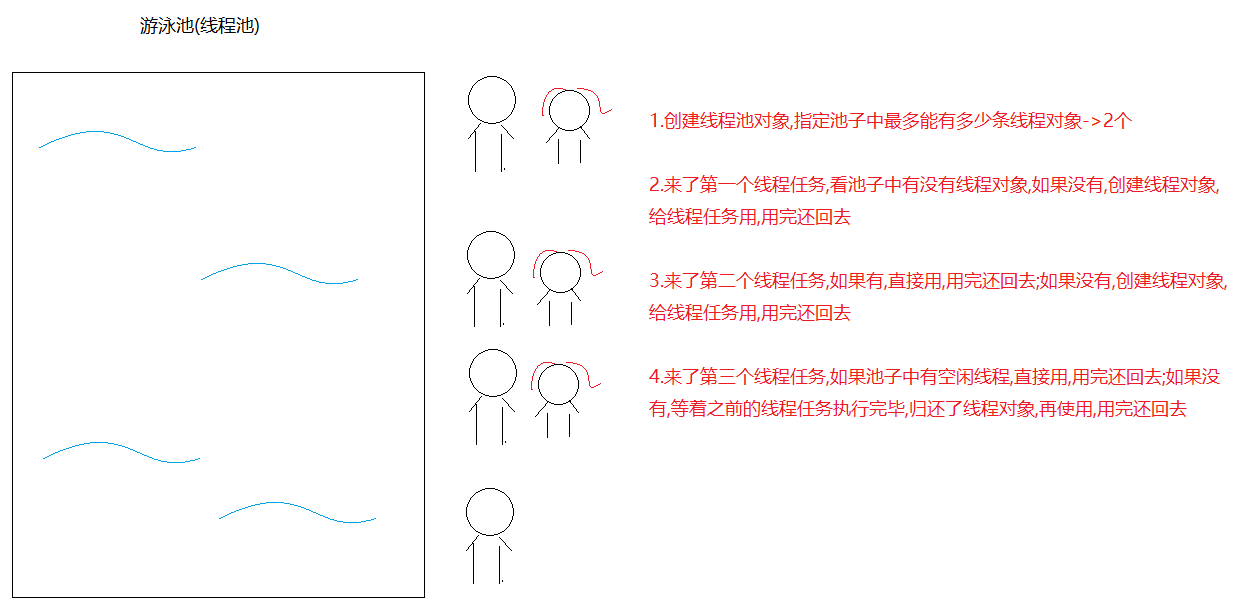1
2
3
4
5
6
7
8
9
10
11
12
13
14
15
16
17
18
19
20
21
22
23
24
25
26
27
28
29
30
31
32
33
34
35
36
37
38
39
40
41
42
43
44
45
46
47
48
49
50
51
52
53
54
55
56
57
58
59
60
61
62
63
64
65
66
67
68
69
70
71
72
73
|
/*
count和flag可以定义成包装类
但是要记得给count和flag手动赋值
不然对于本案例来说,容易出现空指针异常
*/
public class BaoZiPu {
//代表包子的count
private int count;
//代表是否有包子的flag
private boolean flag;
public BaoZiPu() {
}
public BaoZiPu(int count, boolean flag) {
this.count = count;
this.flag = flag;
}
/*
getCount 改造成消费包子方法
直接输出count
*/
public synchronized void getCount() {
//1.判断flag是否为false,如果是false,证明没有包子,消费线程等待
if (this.flag == false) {
try {
this.wait();
} catch (InterruptedException e) {
throw new RuntimeException(e);
}
}
//2.如果flag为true,证明有包子,开始消费
System.out.println("消费了..............第" + count + "个包子");
//3.改变flag状态,为false,证明消费完了,没 有包子了
this.flag = false;
//4.唤醒生产线程
this.notify();
}
/*
setCount 改造成生产包子
count++
*/
public synchronized void setCount() {
//1.判断flag是否为true,如果是true,证明有包子,生产线程等待
if (this.flag == true) {
try {
this.wait();
} catch (InterruptedException e) {
throw new RuntimeException(e);
}
}
//2.如果flag为false,证明没有包子,开始生产
count++;
System.out.println("生产了...第" + count + "个包子");
//3.改变flag状态,为true,证明生产完了,有包子了
this.flag = true;
//4.唤醒消费线程
this.notify();
}
public boolean isFlag() {
return flag;
}
public void setFlag(boolean flag) {
this.flag = flag;
}
}
|



